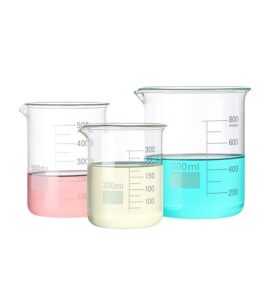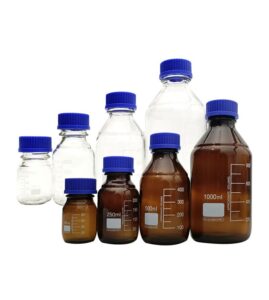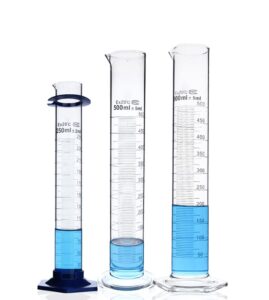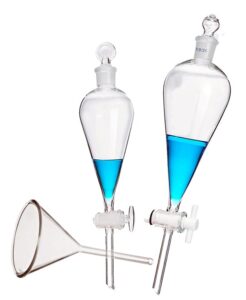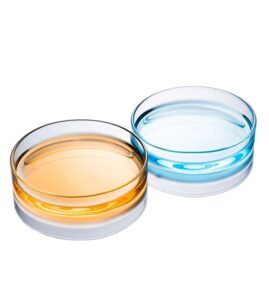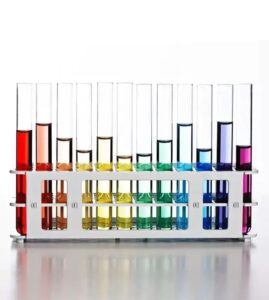Have you ever wondered why cleaning glassware in laboratories is so crucial? What makes it different from washing your regular dishes at home? Can improper cleaning affect the outcome of scientific experiments?
Cleaning glassware in laboratories is not just about removing visible dirt; it’s about ensuring the accuracy and reliability of scientific experiments. Laboratories rely on pristine conditions to produce valid results, and any residue on glassware can compromise these outcomes.
Keeping you intrigued to delve deeper into this topic.
Why is Laboratory Glassware Cleaning Essential?
Laboratory glassware, unlike our everyday kitchenware, is used for precise scientific experiments. Residues, even microscopic, can lead to inaccurate results. Contamination can skew the data, leading to false conclusions.
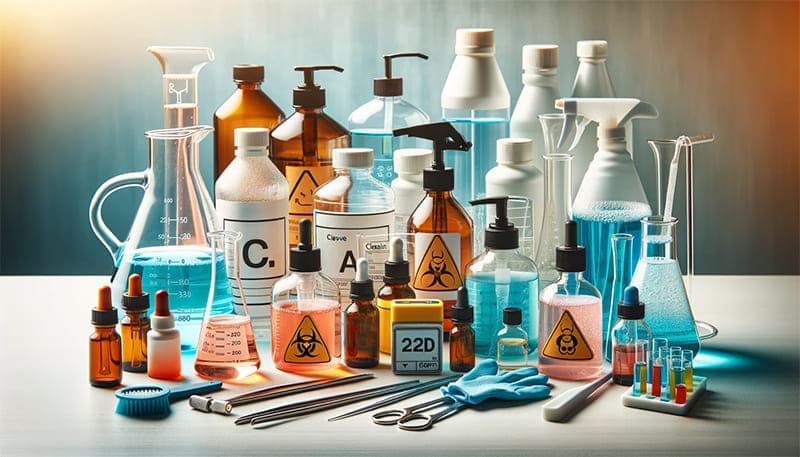
Choosing the Right Cleaning Agents
In a chemistry laboratory, various cleaning agents are used for washing glassware, depending on the type of residue and the material of the instruments. Here are some common cleaning agents:
- Chromic Acid Cleaning Solution: Effective for removing water stains or certain inorganic salt precipitates.
- Concentrated Industrial Hydrochloric Acid: Useful for removing water stains or some inorganic salt precipitates.
- 5% Oxalic Acid Solution: Acidified with a few drops of sulfuric acid, it can remove traces of potassium permanganate.
- 5% to 10% Sodium Phosphate (Na3PO4·12H2O) Solution: Good for washing off oily substances.
- 30% Nitric Acid Solution: Used for cleaning carbon dioxide detectors and micro burettes.
- Urea Cleaning Solution: An excellent solvent for proteins, suitable for washing containers that held protein preparations and blood samples.
- Organic Solvents: Such as acetone, ether, and ethanol, which can be used to remove grease, lipid-soluble dyes, and other stains. Xylene can be used to remove paint stains.
- Potassium Hydroxide in Ethanol Solution and Sodium Hydroxide Solution with Potassium Permanganate: These are two strongly alkaline cleaning solutions that can aggressively clean the inner walls of glassware. They should be used with care as they are highly corrosive, and the duration of cleaning should not be too long. These solutions are also often used for cleaning injection bottles in LC and GC.
- Commercial Cleaning Agents: Products from companies like Borer Chemie AG offer specialized cleaning solutions for glassware, including options for automatic and mechanical cleaning.
In summary, the choice of cleaning agent depends on the type of residue, the material of the glassware, and laboratory safety regulations. Always follow relevant safety guidelines and procedures when selecting and using these cleaning agents.
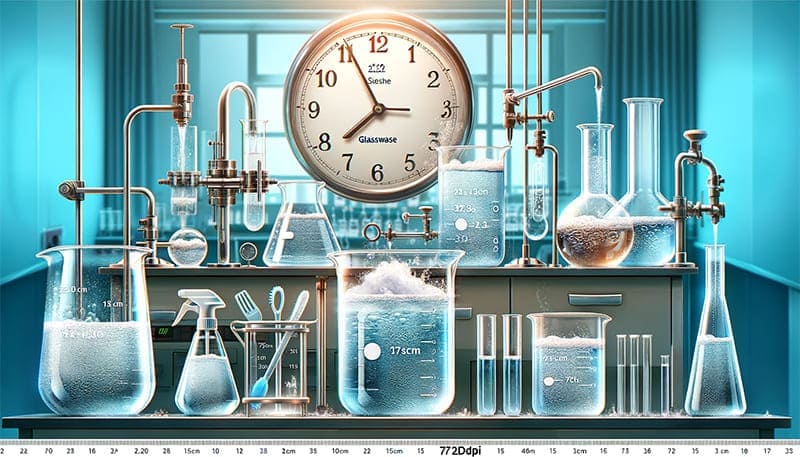
Steps for Effective Glassware Cleaning
Cleaning glassware is an essential task in laboratories to ensure the accuracy and reliability of experimental results. Here’s how to clean glassware and some important considerations:
- Soaking: Soak the glassware in tap water to soften stains for easier cleaning. The duration can range from 10 minutes to several hours, depending on the degree and type of stains.
- Preliminary Rinsing: Rinse the inside and outside surfaces of the glassware with tap water to remove residual stains and impurities. Ensure a sufficient flow of water for thorough rinsing.
- Using Soap or Detergent: If stains or grease remain after the initial rinse, use soap water or detergent for scrubbing. Dip a brush in a soap or detergent solution and carefully scrub the inner and outer surfaces of the glassware, especially the hard-to-clean areas. After rinsing with tap water, rinse three or more times with deionized water to remove any remaining soap or detergent.
- Boiling or Ultrasonic Cleaning: For tough grease or stubborn stains, boiling or ultrasonic cleaning methods can be used. Boil the glassware in water for 10-30 minutes or use an ultrasonic cleaner. This method is more effective in removing stains and grease.
- Without Using Brushes: For glassware that should not be cleaned with brushes, such as graduated cylinders or volumetric flasks, use soaking, wiping, and scraping methods. Soak the instrument in soap water or detergent solution, then wipe the inner walls with a cotton ball or clean cloth, followed by rinsing with tap water.
- Protecting Glassware: Handle glassware with care during cleaning to avoid breakage or scratches. Particularly when using a brush, be gentle and avoid using abrasive materials that could damage the glassware.
- Drying: Dry the cleaned glassware thoroughly to prevent residual moisture from affecting experimental results. Choose an appropriate drying method such as air-drying, blow-drying, or oven-drying, depending on the situation.
- Regular Maintenance: Regular cleaning and maintenance are necessary to keep glassware clean and extend its lifespan. The frequency of cleaning should be determined based on the needs of the experiments and the frequency of use, typically at least every 2-3 months.
It’s important to note that different types of glassware require specific cleaning methods and precautions. Therefore, choose the appropriate cleaning method based on the type of instrument and its usage requirements. Also, label and record after cleaning for subsequent use and management.
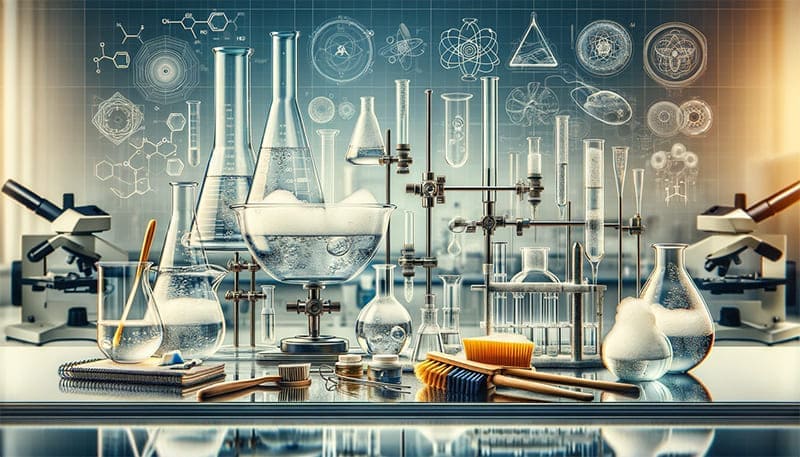
Advanced Techniques for Stubborn Stains
Sometimes, regular cleaning methods might not be enough, especially when dealing with stubborn stains or residues. In such cases, specialized cleaning techniques come into play:
- Acid Washing: For removing tough inorganic deposits, acid washing with agents like chromic or nitric acid is effective. However, this method requires extreme caution due to the corrosive nature of acids.
- Alkaline Washes: For organic residues, alkaline solutions, like a mix of potassium hydroxide and ethanol, can be used. They effectively break down organic matter but require careful handling due to their caustic nature.
- Enzymatic Cleaners: These are particularly useful for removing protein-based residues. Enzymatic cleaners break down proteins, making them easy to wash away.
Each of these methods requires specific safety precautions and disposal methods, adhering to laboratory safety standards.
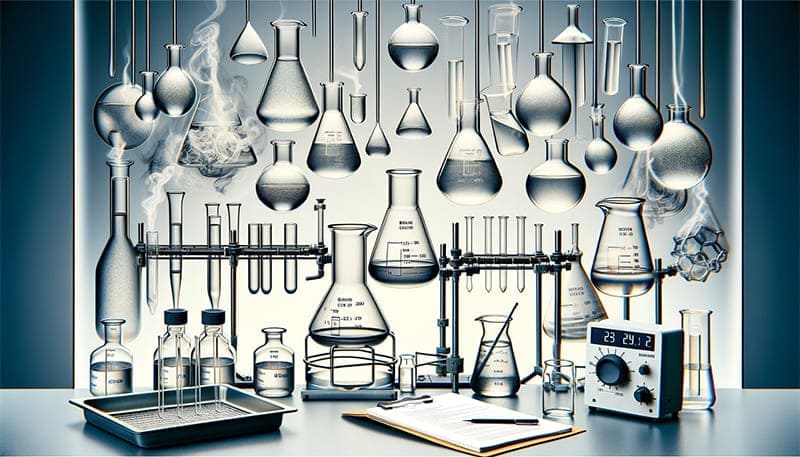
Drying Glassware Post-Cleaning
After cleaning, drying glassware in a laboratory is an important step to ensure they are ready for use without contamination. Here are the methods for drying glassware:
- Spin Drying: Laboratories often use spin dryers or centrifuges to dry cleaned glassware. This method is quick and ensures that both the inside and outside of the glassware are dry.
- Oven Drying: Place the cleaned glassware in an oven or dryer. This method requires a specific amount of time and temperature but ensures complete drying. Care must be taken to select appropriate temperature and duration to avoid damaging the glassware.
- Air Drying: Place the cleaned glassware on clean filter paper and leave it in a ventilated area to air dry. This simple method takes longer. Care should be taken to not invert the glassware or subject it to external pressure to avoid deformation or damage.
- Alcohol Drying: Pour alcohol onto chemically resistant paper and use it to wipe the glass surfaces dry, removing any paper residue and preventing deformation. This method is suitable for glassware that needs quick drying, as alcohol evaporates quickly, taking the moisture with it. However, caution should be taken with the amount of alcohol used and the drying time to prevent damage.
- Wipe Drying: Wipe the wet glassware with a cotton cloth or paper towel dampened with clean water. Repeat as necessary to ensure the glass surface is clean and dry. This method is suitable for smaller glassware like test tubes and beakers. When wipe drying, pay attention to the force and direction to avoid deforming or damaging the glassware.
It’s important to note that different types of glassware may require different drying methods and precautions. Thus, the appropriate drying method should be chosen based on the type of instrument and its usage requirements, ensuring that the glassware is not damaged. Also, labeling and recording after drying is crucial for subsequent use and management.

Regular Maintenance and Care
Regular cleaning and maintenance of laboratory glassware are essential. The frequency of cleaning should depend on the usage and the type of experiments conducted. Generally, a thorough cleaning every 2-3 months is advisable.
Handling and Storage Post-Cleaning
Once the glassware is clean and dry, proper handling and storage are critical.
- Handling: Always handle glassware with care to prevent breakage. Use appropriate tools like tongs or gloves for hot or chemically treated glassware.
- Storage: Store glassware in a clean, dry, and dust-free environment. Covering them with a clean cloth or placing them in closed cabinets can protect them from dust and other contaminants.
Record Keeping and Maintenance Schedules
Good laboratory practice includes maintaining records of cleaning and maintenance.
- Labeling: After cleaning, label the glassware with the date of cleaning and the person responsible. This practice helps in tracking the usage and the cleaning schedule.
- Maintenance Schedule: Establish a regular maintenance schedule based on the frequency of use and the type of experiments performed.

Common Mistakes to Avoid
To enhance the effectiveness of glassware cleaning in laboratories, it is crucial to avoid certain common mistakes. Here are some additional insights to consider:
Common Mistakes to Avoid in Laboratory Glassware Cleaning
Using Dirty Brushes or Cloths
- Cross Contamination: Using brushes or cloths that are not properly cleaned can lead to cross-contamination. Even small amounts of residue from previous cleanings can transfer to the glassware, compromising the purity needed for accurate experiments.
- Recommended Practice: Always check and clean your cleaning tools before use. It’s advisable to have a dedicated set of brushes and cloths for different types of chemicals or residues.
Overlooking Cracks or Chips
- Compromised Integrity: Glassware with cracks or chips can not only harbor contaminants but also pose a safety risk. These imperfections can lead to breakage during use, potentially causing accidents and loss of valuable samples.
- Inspection Protocol: Implement a routine check for damage before and after cleaning. Damaged glassware should be immediately removed from active use and replaced.
Ignoring Manufacturer’s Instructions
- Material Specific Guidelines: Certain types of glassware may have specific cleaning requirements based on their material composition or design. For example, borosilicate glass may have different cleaning needs compared to quartz glass.
- Adherence to Instructions: Always refer to and follow the manufacturer’s cleaning instructions. This not only ensures the longevity of the glassware but also guarantees that it is cleaned appropriately for its material type.
Additional Points to Consider During Cleaning and Drying Steps
Avoiding Overheating During Drying
- Thermal Stress: Excessive heat during the drying process can cause thermal stress, leading to cracks or structural weaknesses in the glassware.
- Temperature Management: Use controlled temperatures in drying ovens and avoid rapid temperature changes to ensure the integrity of the glassware.
Not Using Appropriate Detergents
- Residue Build-Up: Using inappropriate or harsh detergents can leave residues, which can interfere with experimental results.
- Choosing the Right Detergent: Select detergents that are non-abrasive and designed for laboratory glassware. Ensure they are thoroughly rinsed off to avoid any leftover residue.
Rushing the Cleaning Process
- Incomplete Cleaning: Rushing through the cleaning process can lead to inadequate removal of residues and contaminants.
- Thorough and Mindful Cleaning: Allocate sufficient time for each step of the cleaning process, from soaking to rinsing and drying. Patience and attention to detail are key in achieving pristine glassware.
In summary, understanding and avoiding these common pitfalls in the cleaning process is essential for maintaining the integrity and cleanliness of laboratory glassware. By doing so, we ensure the accuracy and reliability of scientific experiments.
Emphasizing Safety and Environmental Considerations
In the realm of laboratory glassware cleaning, safety and environmental considerations are paramount.
- Chemical Safety: When using chemical agents like acids, alkalis, or solvents, always use appropriate personal protective equipment (PPE) such as gloves, goggles, and lab coats. Ensure proper ventilation and be aware of the chemical’s Material Safety Data Sheet (MSDS) for handling emergencies.
- Environmental Impact: Be conscious of the environmental impact of the cleaning agents used. Opt for environmentally friendly alternatives where possible, and follow proper disposal procedures for hazardous chemicals.

Environmentally Responsible Disposal of Laboratory Wastewater and Solvents
Importance of Proper Disposal
After the meticulous process of cleaning laboratory glassware, the disposal of used water and solvents is a critical aspect often overlooked. Incorrect disposal can lead to environmental contamination and violate waste disposal regulations.
Understanding the Waste
- Categorizing the Waste: Laboratory waste can include detergents, acids, alkalis, organic solvents, and heavy metals. It’s essential to categorize the waste based on its chemical properties – whether it is hazardous, non-hazardous, organic, or inorganic.
- Hazardous vs. Non-Hazardous: Hazardous waste, such as concentrated acids and bases or heavy metal solutions, requires special handling and disposal methods. Non-hazardous waste, like diluted detergents, may have less stringent disposal methods but still requires attention.
Disposal Methods
- Treatment Before Disposal: For certain types of waste, treatment is necessary before disposal. This can include neutralization of acids and bases, precipitation of heavy metals, or segregation of organic solvents.
- Incorporating Dilution: In some cases, particularly with non-hazardous waste, dilution with a large volume of water before disposal is acceptable. However, this should be done only when it complies with local waste disposal regulations.
- Contracting Waste Disposal Services: For hazardous waste, contracting with a licensed waste disposal service is often the best approach. These services have the necessary equipment and expertise to handle and dispose of laboratory waste safely.
- Solvent Recycling: Where possible, consider solvent recycling. This not only reduces waste but also cuts down on the costs of purchasing new solvents.
Environmental and Regulatory Compliance
- Adhering to Local Regulations: Always follow local environmental regulations and guidelines for waste disposal. These regulations are designed to prevent environmental contamination and protect public health.
- Documentation and Record Keeping: Maintain records of waste disposal, including the type of waste, the amount, and the method of disposal. This documentation is crucial for regulatory compliance and audits.
Educating Laboratory Personnel
- Training: Regular training sessions on waste disposal methods and environmental impacts are crucial. Educate staff on the importance of proper waste segregation and disposal.
- Promoting Environmental Awareness: Cultivate an environmentally responsible culture in the laboratory. Encourage practices that minimize waste generation and promote recycling and reuse where possible.
In conclusion, the responsible disposal of laboratory wastewater and solvents is a critical component of sustainable laboratory practices. By understanding the nature of the waste and adhering to proper disposal methods and regulations, laboratories can significantly reduce their environmental impact and contribute to a safer and cleaner environment.
Conclusion
In conclusion, mastering the art of glassware cleaning in laboratories is about much more than just maintaining cleanliness. It’s a comprehensive practice that encompasses selecting appropriate cleaning agents, employing effective cleaning techniques, understanding environmental responsibilities, and ensuring safety. Adhering to these guidelines not only guarantees the accuracy of scientific experiments but also contributes to sustainable and responsible laboratory operations.


